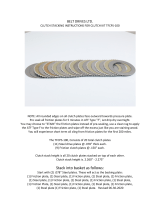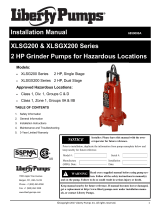
14
T R A N S M I S S I O N S
®
Section V Overhaul
GENERAL
Before removal and disassembly, review the following
procedures. Use the proper hand tools, slings, or hoists
for the job.
DISASSEMBLY
NOTE: Read OEM vehicle manual for specific removal
instructions.
Before starting disassembly, review the exploded view
shown in Figure 8. The transmission can be disassem-
bled following the index numbers shown in Figure 8.
Seals. Remove O-rings, sealing rings and oil seals care-
fully to prevent damage if they must be reused. It is
best to replace these items.
Bearings. Do not remove bearings unless replacement
is required, or cleaning can not be done properly.
• Keep matched parts or sets together. Do not reverse
or mix them.
CLEANING
• Rinse all metal parts in solvent to remove dirt, grease
and transmission fluid.
• Take special care to remove solvent from all parts.
• Air dry clutch plates.
• If O-rings are to be reused, air dry them.
INSPECTION
Case. Inspect for cracks. Check sealing surfaces for
nicks, scratches, or burrs that can cause leaks. Inspect
output shaft bore for signs of wear on one side. This
can indicate misalignment of prop shaft.
Gears. Inspect for unusual wear patterns, chipped,
cracked, or broken teeth.
Bearings. Inspect for chips, cracks, galling, or missing
bearings. Check for signs of overheating.
Threaded Parts. Inspect for stripped, damaged
threads, or burrs.
Springs. Inspect for distortion, cracks or other dam-
age. Check springs against dimensions in specification
section.
REPAIR
• Remove scratches, burrs or minor surface defects with
very fine emery cloth.
• Threaded holes can be retapped using the same size
tap. Do not make the hole oversize.
• Repair or replace all damaged parts.
Assembly
• A new coupling nut must be used as assembly
• Prior to assembly, dip or coat internal parts with trans-
mission fluid. Let excess fluid drain off.
• Use a light coat of vasoline to position or hold a gas-
ket, O-ring or small part for assembly. Apply to sealing
rings before assembly.
CAUTION: Threaded plugs, screws,
bolts and coupling nuts must be
tightened to the torques shown in
Table 4 to prevent premature fail-
ure of transmission.
WARNING: Keep work area, tools,
and transmission clean. Wip up any
spilled transmission fluid to prevent
accidents. As required, wear safety
glasses, safety shoes and a hard hat
to prevent personal injury.
WARNING: Cleaning solvents can
be toxic, flammable, an irritant to
the skin, or give off harmful fumes.
Avoid prolonged contact, inhalation
of vapors, or smoking. Failure to
comply can result in injury or death
to persons.

























